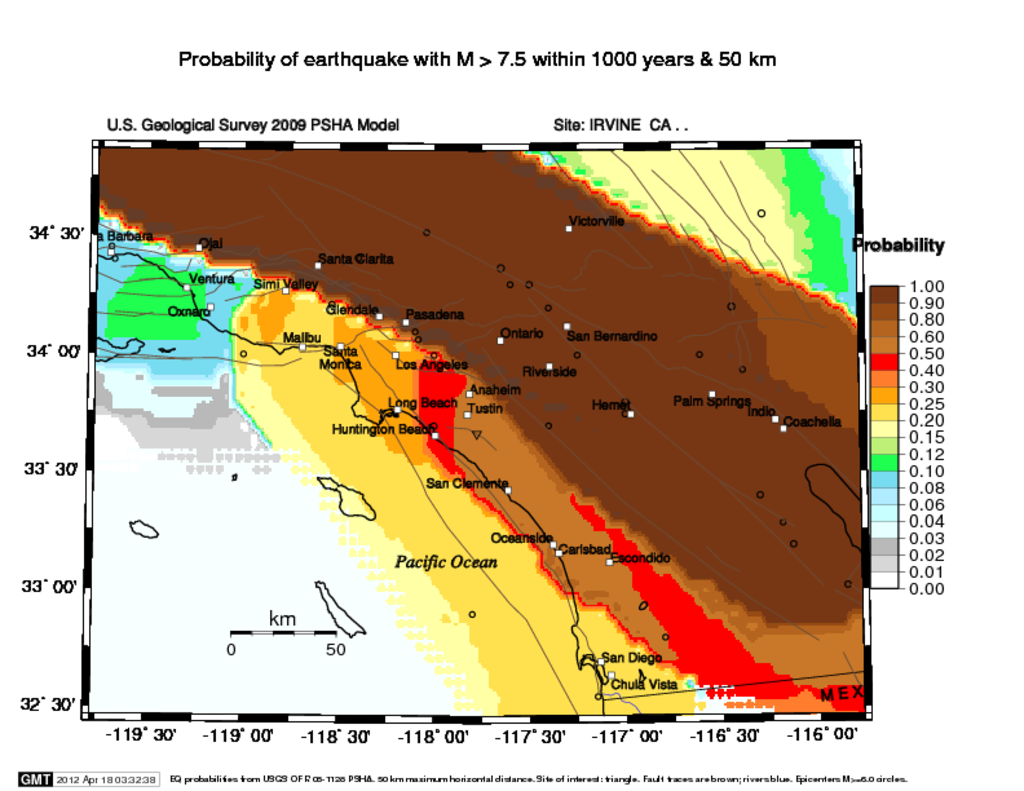
 Using the USGS site, I generated maps relevant to the question of the probability of occurence of high magnitude quakes on the Newport-Inglewood fault, and coincidentally all of the other faults. The maps are centered on UC Irvine, just because I live and work there. Since I have lived almost all of my life in California, earthquakes have always been of great interest to me.
Using the USGS site, I generated maps relevant to the question of the probability of occurence of high magnitude quakes on the Newport-Inglewood fault, and coincidentally all of the other faults. The maps are centered on UC Irvine, just because I live and work there. Since I have lived almost all of my life in California, earthquakes have always been of great interest to me.
This top map was the longest lifetime of a thousand years, and in the white area of probability less than o.o1, we see no earthquake of magnitude greater than 8, setting the limit of less than one in 100,000 years. This is in contrast to the LA Times graph discussed in a previous post that labeled the Newport-Inglewood fault as 7.5 – 8.0. This is the graph they really should have used for the 8.0.
In examining the question of a 7.5 on the Newport-Inglewood fault, I generated the second graph, which shows the Newport-Inglewood fault along the coast in red, running inland around Huntington beach. The red color means that in a thousand years, there is about a 50% probability of having a 7.5 magnitude quake on that fault. That means such a quake could occur once every 2,000 years.
I have noticed than in the UC Irvine Long Range Development Plan, a figure of up to 7.5 magnitude quoted for the Newport-Inglewood fault. The campus buildings I am told were strengthened to a 7.0 for this fault. Rowland hall, the Chemistry building, recently had its original rock wall sides removed as a hazard. They were replaced by an extension of offices with full window views, that allowed for expansion, and also further stabilized the building.
In our offices, bookcases and filing cabinets are bolted to the walls. I often secure my books in the bookcases using bunge cords. In general, desks and office equipment are not secured.
The above map shows the probability of having a 7.0 or greater magnitude earthquake over a 30 year period. Along the coast and at Irvine, the probability is about 0.10. That means that the expectation of a 7.0 is about one in 300 years. The last large quake on the Newport-Inglewood fault was 79 years ago in 1933 in Long Beach, and was a 6.4.

